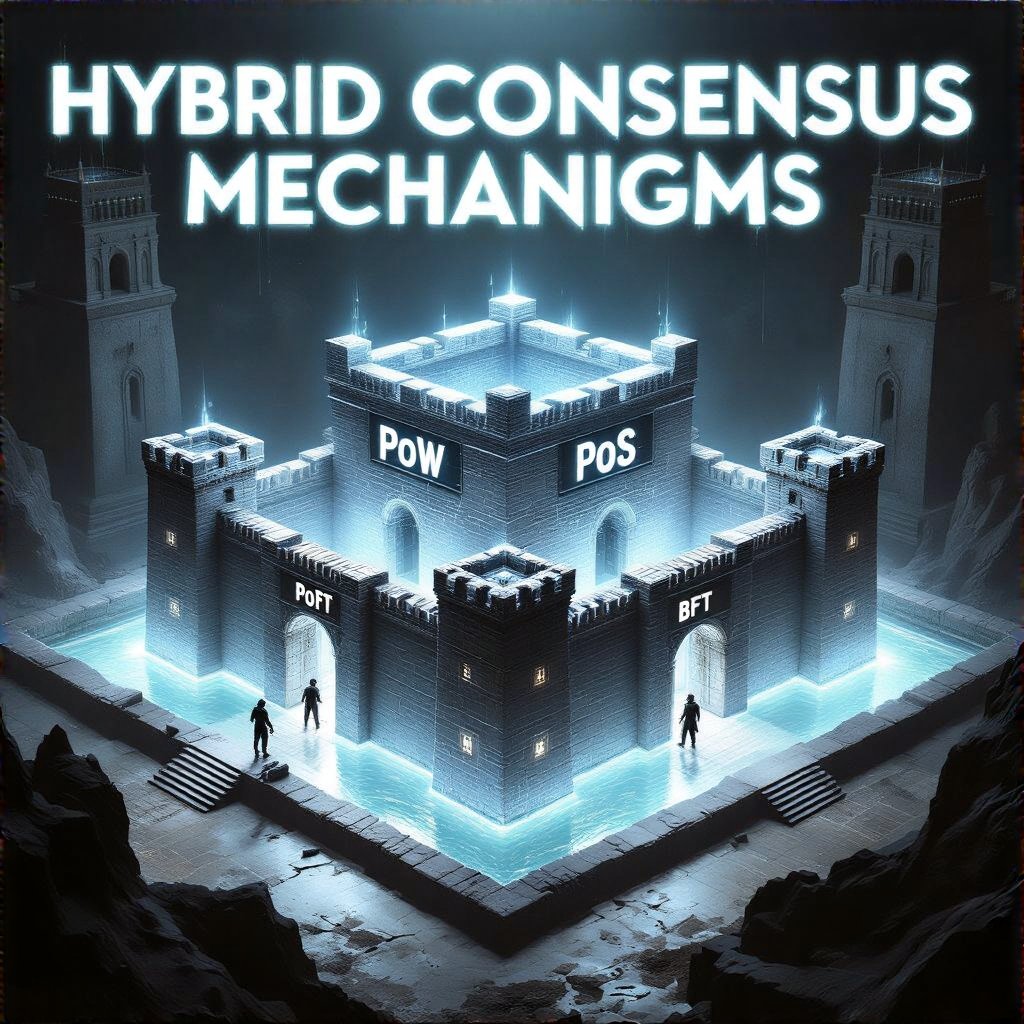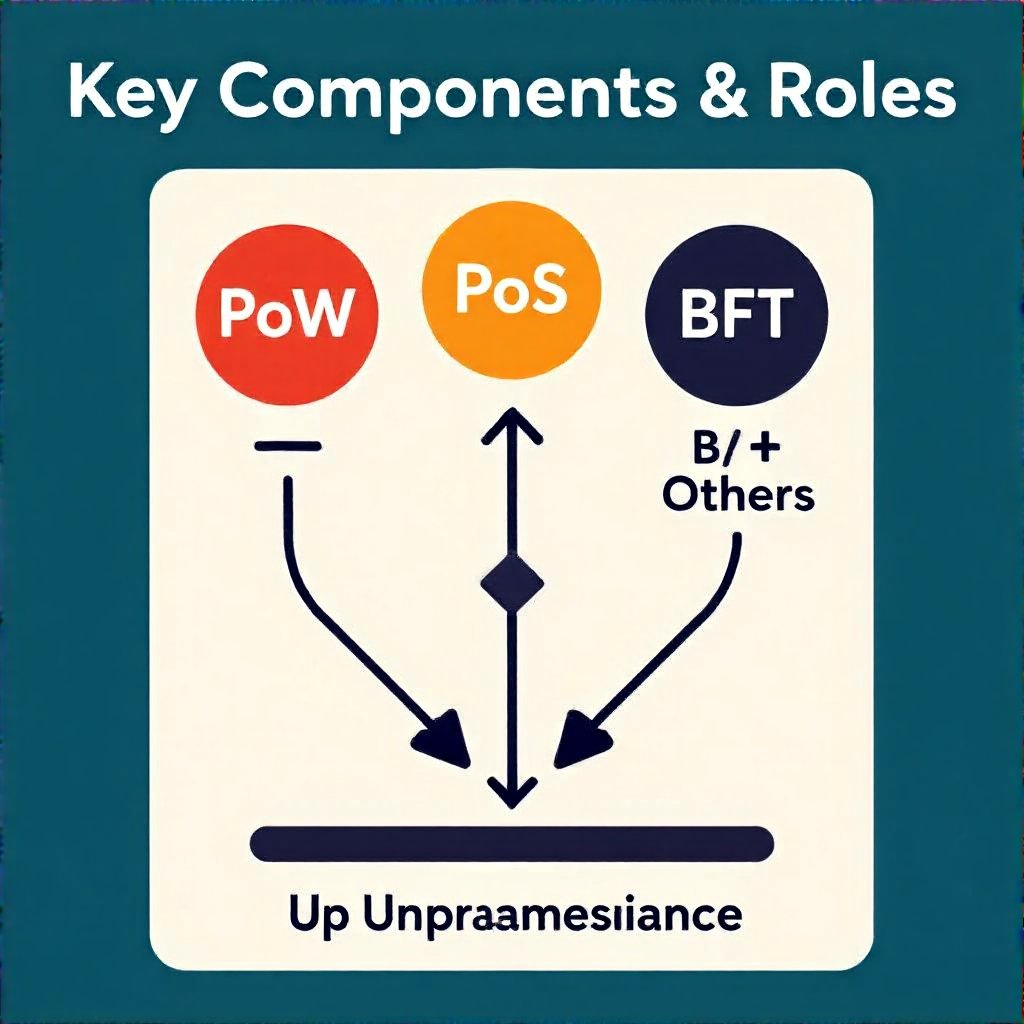What Is a Hybrid Consensus Mechanism in Blockchain?

In the cutthroat realm of blockchain security, hybrid consensus mechanisms blend PoW, PoS, and BFT to forge layered defenses. From a hunter’s lens, each layer is a potential tripwire—tightly coupled, yet provably harder to exploit if the design keeps permissions aligned with intent. This is not a simple sum; it’s a choreography of trust, where attackers must map multiple surfaces simultaneously.
- How Hybrid Consensus Works
- The Core Components & Roles
- Advantages and Trade-offs
- Tripwires & Vulnerabilities
- Real-World Examples & Outlook
- Best Practices
- FAQ
How Hybrid Consensus Works
Hybrid systems synchronize multiple algorithms to cover blind spots. They leverage the strengths of each layer while constraining what each layer can do. For example, as CoinDesk notes, this integration reduces the risk of a single point of failure. The result is a chain that traces attack surfaces like a haunted floorplan—each step reveals a new tripwire that must be bypassed. In practice, attackers must orchestrate cross-layer exploits, a daunting arc of permissions vs. intent that few adversaries can complete without leaving telltale scars.

The Core Components & Roles
At the heart of a hybrid design are three forces: PoW, PoS, and BFT. PoW provides the energy sink that makes block creation costly, PoS offers stake-weighted finality, and BFT-style messaging enforces agreement even when some nodes misbehave. This is a delicate dance: if duties blur, a Trojan horse of excessive permissions can sneak in. A clear separation—guardrails that enforce “permissions vs. intent”—is non-negotiable. Real-world audits, including those discussed in partial audits and anonymous-team governance, reveal where such misalignments threaten trust. For further context on how a major platform handles this shift, see Ethereum's move to PoS.

Advantages and Trade-offs
- Enhanced Security: layered defenses raise the bar, forcing attackers to solve multiple challenges in concert.
- Scalability Gains: delegating validation tasks can boost throughput when layers are balanced and well-governed.
- Decentralization Balance: careful design prevents central points of control while preserving efficiency.
Tripwires & Vulnerabilities
But no fortress is flawless. A complex hybrid can hide logic bombs—conditions that trigger only under rare sequences of events. When permissions outpace intent, attackers can exploit misalignments across layers via cross-chain messages or misconfigured finality rules. The road to adoption often tempts speed over transparency, expanding the attack surface. For a broader view on how real-world utility affects security, see real-world utility, which underscores why governance and auditing must keep pace with deployment. Regulators also weigh in on the design choices; a quick reference can be found in guidance about regulatory-challenged deployments.

Real-World Examples & Outlook
Projects like Solana have pitched hybrid flavors to balance throughput with security. History reminds us that even multi-layer defenses crumble if one layer is not audited end-to-end. The trajectory toward stronger formal verification, better separation of concerns, and standardized interfaces will shape how these systems evolve and scale in practice.
Best Practices for Hybrid Systems
- Maintain a strict separation of duties between layers; avoid permission creep that creates escalation paths.
- Invest in end-to-end testing and formal verification where feasible; treat proofs as first-class artifacts.
- Document governance processes to keep Permissions vs. Intent aligned across upgrades and forks.
- Incorporate continuous auditing, external reviews, and transparent vulnerability disclosures.
FAQ
Q: What is the main advantage of a hybrid model?
A: It blends strengths of multiple mechanisms to improve security and scalability, but requires disciplined design to avoid creating new vulnerabilities.
